Bioelectrochemical Detection of Mycobacterium tuberculosis ESAT-6 in an Antibody-Based Biomicrosystem
Abstract
:1. Introduction
2. Materials and Methods
2.1. Reagents and Equipment
2.2. PCB Manufacturing
2.3. Lift off and Gold Deposition
2.4. Biomicrosystem Development
2.5. Reagents Immobilization
2.6. Immobilization Testing by Electrical Techniques
2.7. Analytic Hierarchy Process for the Biomicrosystem and Traditional Detection Techniques
3. Results
3.1. Immobilization Testing by Electrical Techniques
3.2. ESAT6 Detection
3.3. Analytic Hierarchy Process for the Biomicrosystem and Traditional Detection Techniques
4. Discussion
5. Conclusions
Acknowledgments
Author Contributions
Conflicts of Interest
References
- He, F.; Xiong, Y.; Liu, J.; Tong, F.; Yan, D. Construction of Au-IDE/CFP10-ESAT6 aptamer/DNA-AuNPs MSPQC for rapid detection of Mycobacterium tuberculosis. Biosens. Bioelectron. 2016, 77, 799–804. [Google Scholar] [CrossRef] [PubMed]
- Kim, E.J.; Kim, E.B.; Lee, S.W.; Cheon, S.A.; Kim, H.-J.; Lee, J.; Lee, M.-K.; Ko, S.; Park, T.J. An easy and sensitive sandwich assay for detection of Mycobacterium tuberculosis Ag85B antigen using quantum dots and gold nanorods. Biosens. Bioelectron. 2017, 87, 150–156. [Google Scholar] [CrossRef] [PubMed]
- Ogwang, S.; Mubiri, P.; Bark, C.M.; Joloba, M.L.; Boom, W.H.; Johnson, J.L. Incubation time of Mycobacterium tuberculosis complex sputum cultures in BACTEC MGIT 960: 4 Weeks of negative culture is enough for physicians to consider alternative diagnoses. Diagn. Microbiol. Infect. Dis. 2015, 83, 162–164. [Google Scholar] [CrossRef] [PubMed]
- Giles, N.; Bhatia, R. Cough and fever in an immigrant adolescent with abnormal chest X-ray. Respir. Med. Case Rep. 2017, 20, 19–21. [Google Scholar] [CrossRef] [PubMed]
- Prabhakar, N.; Arora, K.; Arya, S.K.; Solanki, P.R.; Iwamoto, M.; Singh, H.; Malhotra, B.D. Nucleic acid sensor for M. tuberculosis detection based on surface plasmon resonance. Analyst 2008, 133, 1587. [Google Scholar] [CrossRef] [PubMed]
- UNITAID. Tuberculosis Medicines Technology and Market Landscape; UNITAID: Geneva, Switzerland, 2014. [Google Scholar]
- Yan, Z.; Gan, N.; Zhang, H.; Wang, D.; Qiao, L.; Cao, Y.; Li, T.; Hu, F. A sandwich-hybridization assay for simultaneous determination of HIV and tuberculosis DNA targets based on signal amplification by quantum dots-PowerVisionTM polymer coding nanotracers. Biosens. Bioelectron. 2015, 71, 207–213. [Google Scholar] [CrossRef] [PubMed]
- Lemaire, J.F.; Casenghi, M. New diagnostics for tuberculosis: Fulfilling patient needs first. J. Int. AIDS Soc. 2010, 13, 40. [Google Scholar] [CrossRef] [PubMed] [Green Version]
- World Health Organization. The End TB Strategy: Global Strategy and Targets for Tuberculosis Prevention, Care and Control after 2015. Available online: http://apps.who.int/iris/bitstream/10665/172989/3/B134_CONF4Rev1-en.pdf (accessed on 13 July 2017).
- Zhang, Q.D.; March, G.; Noel, V.; Piro, B.; Reisberg, S.; Tran, L.D.; Hai, L.V.; Abadia, E.; Nielsen, P.E.; Sola, C.; et al. Label-free and reagentless electrochemical detection of PCR fragments using self-assembled quinone derivative monolayer: Application to Mycobacterium tuberculosis. Biosens. Bioelectron. 2012, 32, 163–168. [Google Scholar] [CrossRef] [PubMed]
- Lien, T.T.N.; Takamura, Y.; Tamiya, E.; Vestergaard, M.C. Modified screen printed electrode for development of a highly sensitive label-free impedimetric immunosensor to detect amyloid beta peptides. Anal. Chim. Acta 2015, 892, 69–76. [Google Scholar] [CrossRef] [PubMed]
- Esfandyarpour, R.; DiDonato, M.J.; Yang, Y.; Durmus, N.G.; Harris, J.S.; Davis, R.W. Multifunctional, inexpensive, and reusable nanoparticle-printed biochip for cell manipulation and diagnosis. Proc. Natl. Acad. Sci. USA 2017, 114, E1306–E1315. [Google Scholar] [CrossRef] [PubMed]
- World Health Organization. Global Tuberculosis Report 2015; World Health Organization: Geneva, Switzerland, 2015. [Google Scholar]
- Cheon, S.A.; Cho, H.H.; Kim, J.; Lee, J.; Kim, H.J.; Park, T.J. Recent tuberculosis diagnosis toward the end TB strategy. J. Microbiol. Methods 2016, 123, 51–61. [Google Scholar] [CrossRef] [PubMed]
- Lopez, A.D.; Mathers, C.D.; Ezzati, M.; Jamison, D.T.; Murray, C.J. Global Burden of Disease and Risk Factors; The International Bank for Reconstruction and Development/The World Bank: Washington, DC, USA, 2006; ISBN 0821362623. [Google Scholar]
- Kim, J.; Lee, K.-S.; Kim, E.B.; Paik, S.; Chang, C.L.; Park, T.J.; Kim, H.-J.; Lee, J. Early detection of the growth of Mycobacterium tuberculosis using magnetophoretic immunoassay in liquid culture. Biosens. Bioelectron. 2017, 96, 68–76. [Google Scholar] [CrossRef] [PubMed]
- Costa, M.P.; Andrade, C.A.S.; Montenegro, R.A.; Melo, F.L.; Oliveira, M.D.L. Self-assembled monolayers of mercaptobenzoic acid and magnetite nanoparticles as an efficient support for development of tuberculosis genosensor. J. Colloid Interface Sci. 2014, 433, 141–148. [Google Scholar] [CrossRef] [PubMed]
- Wang, L.; Leng, C.; Tang, S.; Lei, J.; Ju, H. Enzyme-free signal amplification for electrochemical detection of Mycobacterium lipoarabinomannan antibody on a disposable chip. Biosens. Bioelectron. 2012, 38, 421–424. [Google Scholar] [CrossRef] [PubMed]
- Torres-Chavolla, E.; Alocilja, E.C. Nanoparticle based DNA biosensor for tuberculosis detection using thermophilic helicase-dependent isothermal amplification. Biosens. Bioelectron. 2011, 26, 4614–4618. [Google Scholar] [CrossRef] [PubMed]
- Conzuelo, F.; Campuzano, S.; Gamella, M.; Pinacho, D.G.; Reviejo, A.J.; Marco, M.P.; Pingarrón, J.M. Integrated disposable electrochemical immunosensors for the simultaneous determination of sulfonamide and tetracycline antibiotics residues in milk. Biosens. Bioelectron. 2013, 50, 100–105. [Google Scholar] [CrossRef] [PubMed]
- Mirsky, V.M.; Riepl, M.; Wolfbeis, O.S. Capacitive monitoring of protein immobilization and antigen-antibody reactions on monomolecular alkylthiol films on gold electrodes. Biosens. Bioelectron. 1997, 12, 977–989. [Google Scholar] [CrossRef]
- Urrego, L.F.; Lopez, D.I.; Ramirez, K.A.; Ramirez, C.; Osma, J.F. Biomicrosystem design and fabrication for the human papilloma virus 16 detection. Sens. Actuators B Chem. 2015, 207, 97–104. [Google Scholar] [CrossRef]
- Singh, A.; Pasha, S.K.; Manickam, P.; Bhansali, S. Single-domain antibody based thermally stable electrochemical immunosensor. Biosens. Bioelectron. 2016, 83, 162–168. [Google Scholar] [CrossRef] [PubMed]
- Daniels, J.S.; Pourmand, N. Label-free impedance biosensors: Opportunities and challenges. Electroanalysis 2007, 19, 1239–1257. [Google Scholar] [CrossRef] [PubMed]
- Jin, S.; Ye, Z.; Wang, Y.; Ying, Y. A Novel Impedimetric Microfluidic Analysis System for Transgenic Protein Cry1Ab Detection. Sci. Rep. 2017, 7, 43175. [Google Scholar] [CrossRef] [PubMed]
- Ogata, A.F.; Edgar, J.M.; Majumdar, S.; Briggs, J.S.; Patterson, S.V.; Tan, M.X.; Kudlacek, S.T.; Schneider, C.A.; Weiss, G.A.; Penner, R.M. Virus-Enabled Biosensor for Human Serum Albumin. Anal. Chem. 2017, 89. [Google Scholar] [CrossRef] [PubMed]
- Sharma, R.; Deacon, S.E.; Nowak, D.; George, S.E.; Szymonik, M.P.; Tang, A.A.S.; Tomlinson, D.C.; Davies, A.G.; McPherson, M.J.; Wälti, C. Label-free electrochemical impedance biosensor to detect human interleukin-8 in serum with sub-pg/ml sensitivity. Biosens. Bioelectron. 2016, 80, 607–613. [Google Scholar] [CrossRef] [PubMed]
- Wang, Q.; Su, K.; Hu, L.; Zou, L.; Wang, T.; Zhuang, L.; Hu, N.; Wang, P. A novel and functional assay for pharmacological effects of marine toxins, saxitoxin and tetrodotoxin by cardiomyocyte-based impedance biosensor. Sens. Actuators B Chem. 2015, 209, 828–837. [Google Scholar] [CrossRef]
- Matsishin, M.; Rachkov, A.; Errachid, A.; Dzyadevych, S.; Soldatkin, A. Development of impedimetric DNA biosensor for selective detection and discrimination of oligonucleotide sequences of the rpoB gene of Mycobacterium tuberculosis. Sens. Actuators B Chem. 2016, 222, 1152–1158. [Google Scholar] [CrossRef]
- Sreejit, G.; Ahmed, A.; Parveen, N.; Jha, V.; Valluri, V.L.; Ghosh, S.; Mukhopadhyay, S. The ESAT-6 Protein of Mycobacterium tuberculosis Interacts with Beta-2-Microglobulin (β2M) Affecting Antigen Presentation Function of Macrophage. PLoS Pathog. 2014, 10, e1004446. [Google Scholar] [CrossRef] [PubMed]
- Opota, O.; Senn, L.; Prod’hom, G.; Mazza-Stalder, J.; Tissot, F.; Greub, G.; Jaton, K. Added value of molecular assay Xpert MTB/RIF compared to sputum smear microscopy to assess the risk of tuberculosis transmission in a low-prevalence country. Clin. Microbiol. Infect. 2016, 22, 613–619. [Google Scholar] [CrossRef] [PubMed]
- Saaty, T.L. Decision making with the analytic hierarchy process. Int. J. Serv. Sci. 2008, 1, 83. [Google Scholar] [CrossRef]
- Aligent Technologies. Agilent 4294A Precision Impedance Analyzer: Operation Manual; Agilent Technologies Inc.: Santa Clara, CA, USA, 2003; ISBN 9788578110796. [Google Scholar]

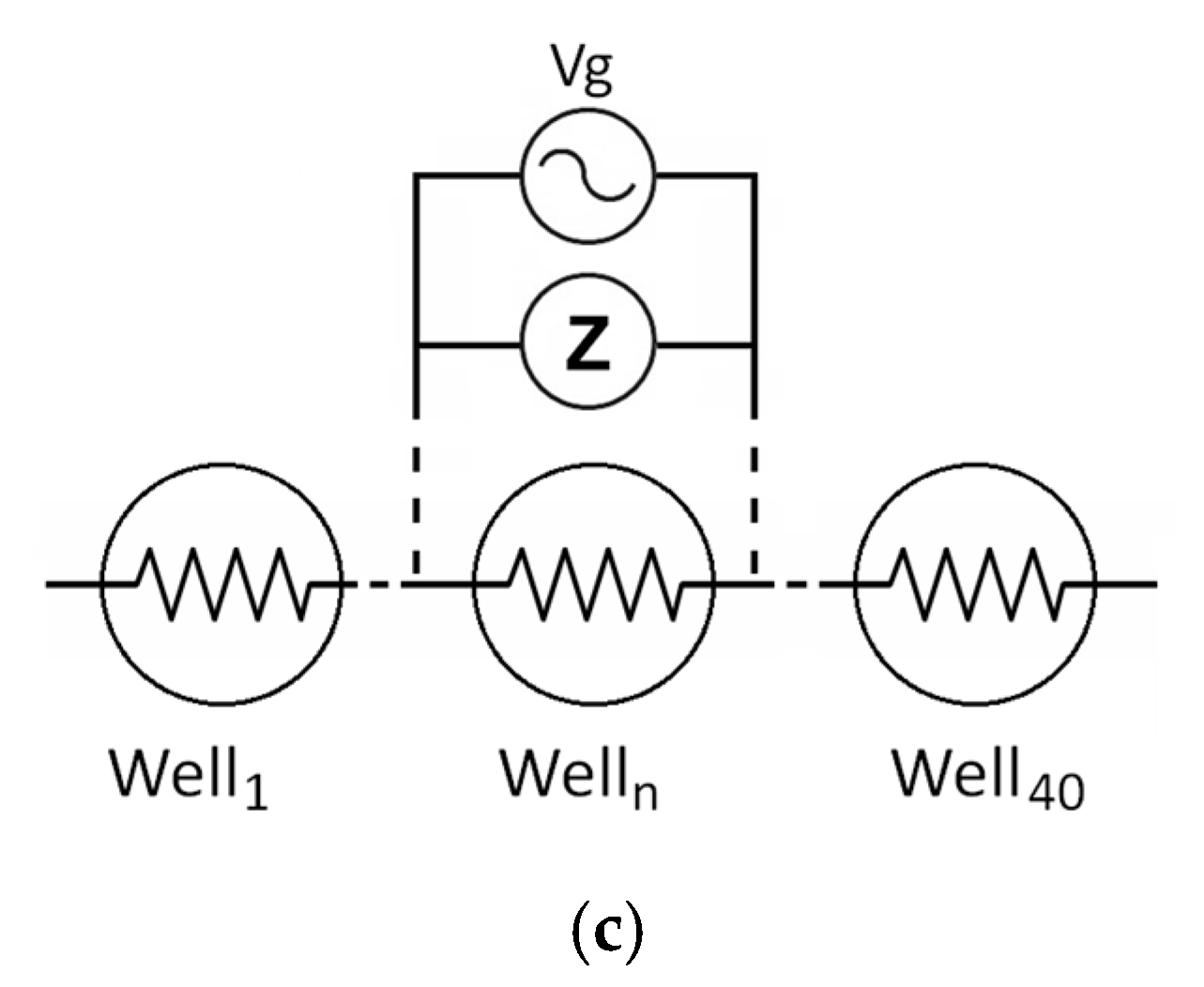
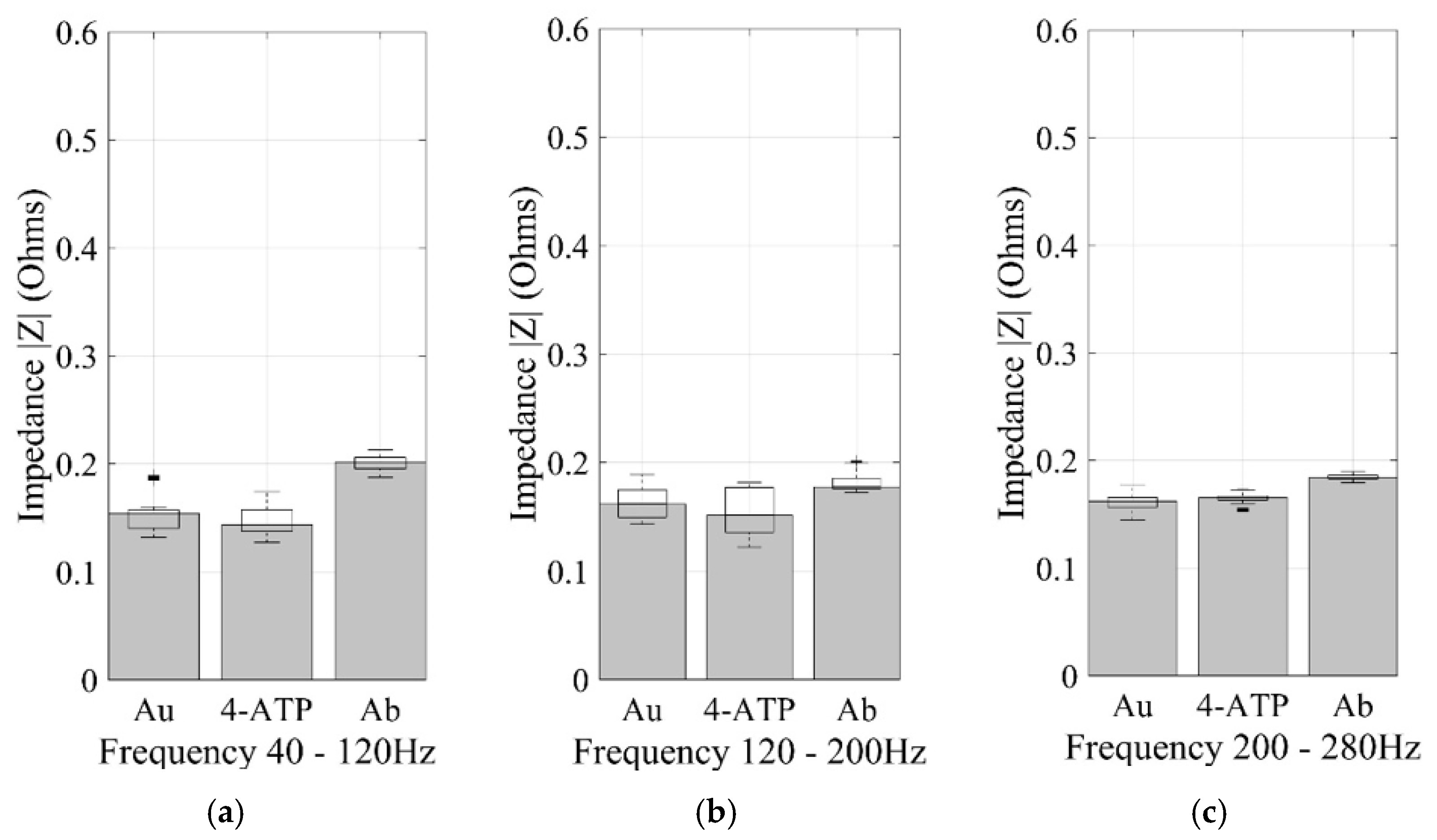
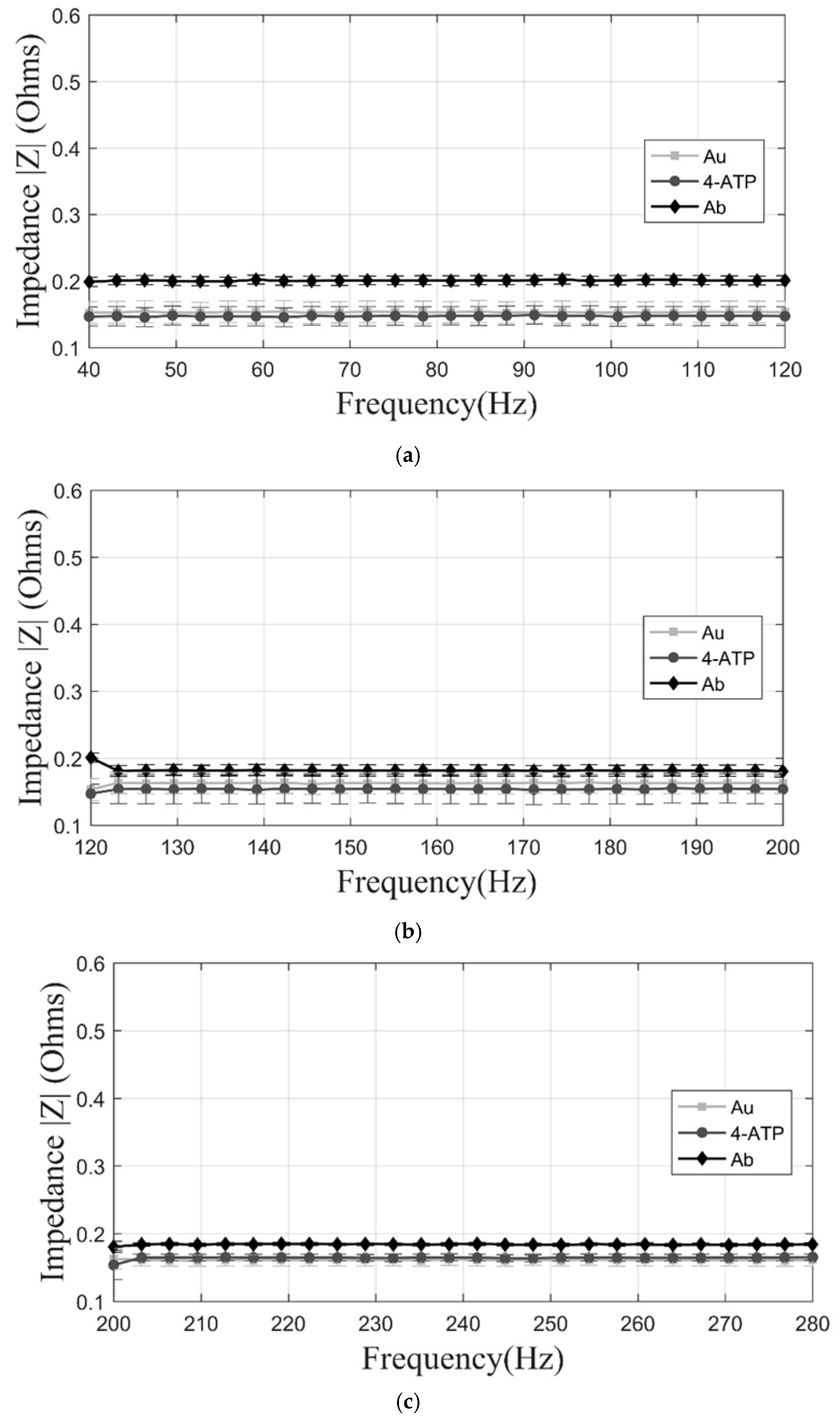
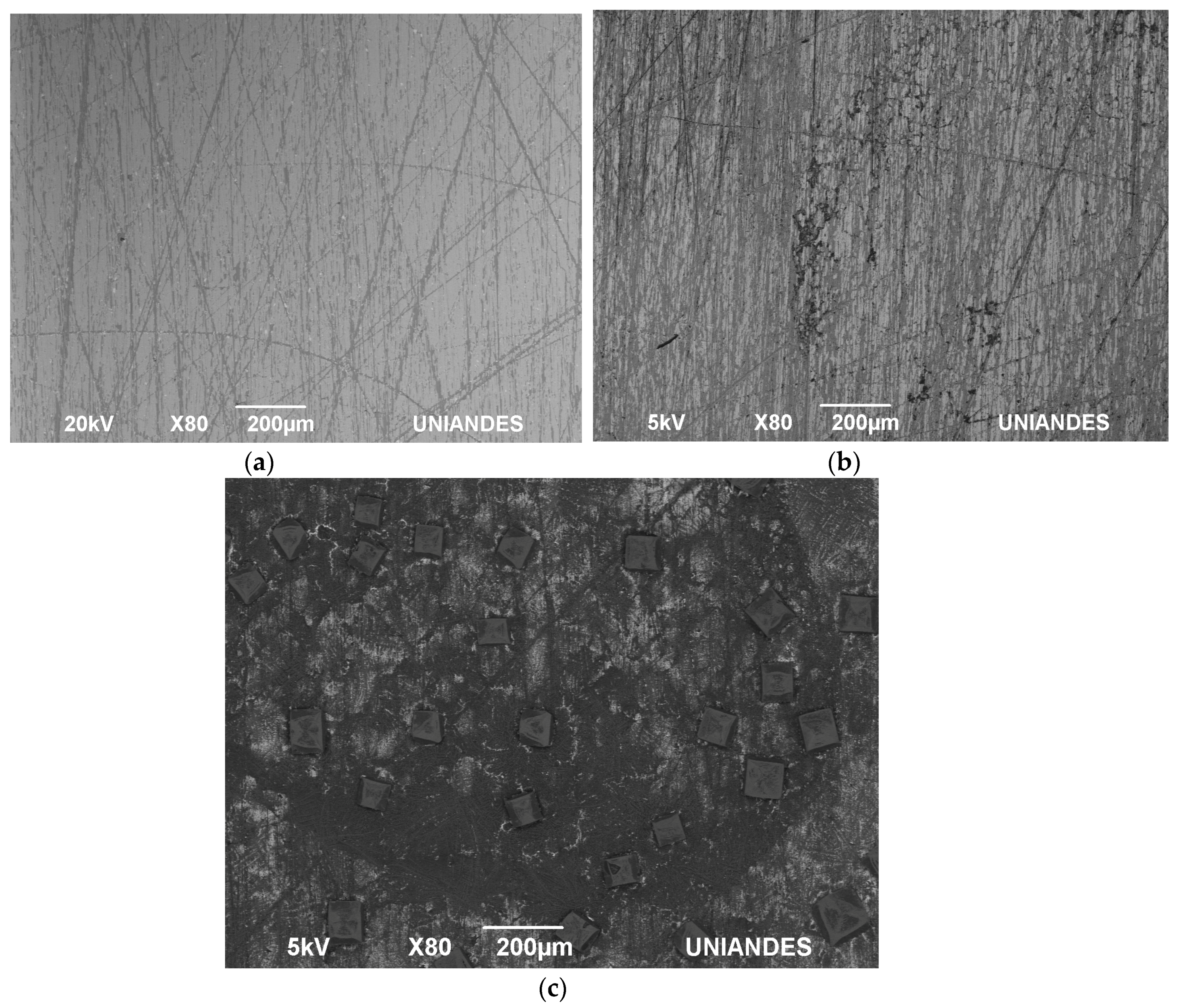
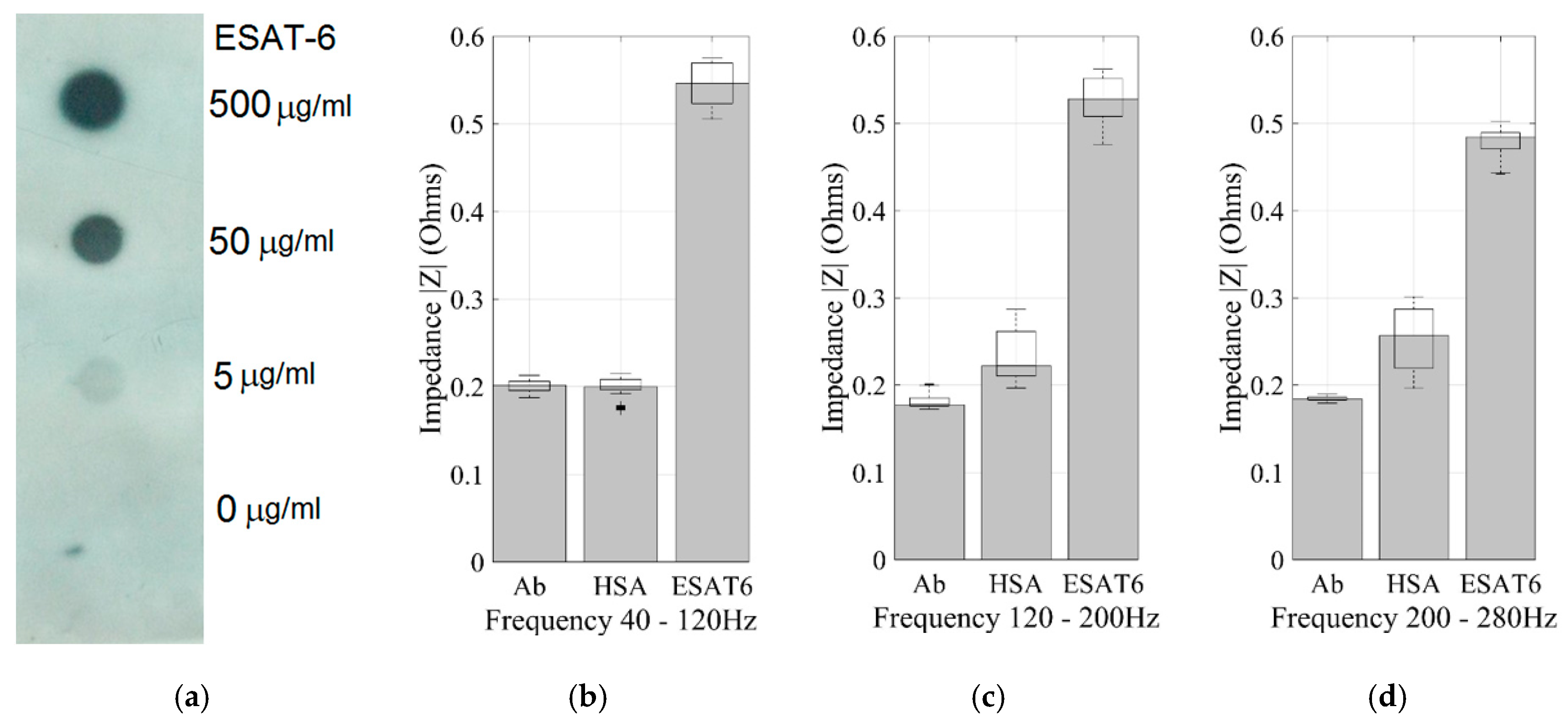
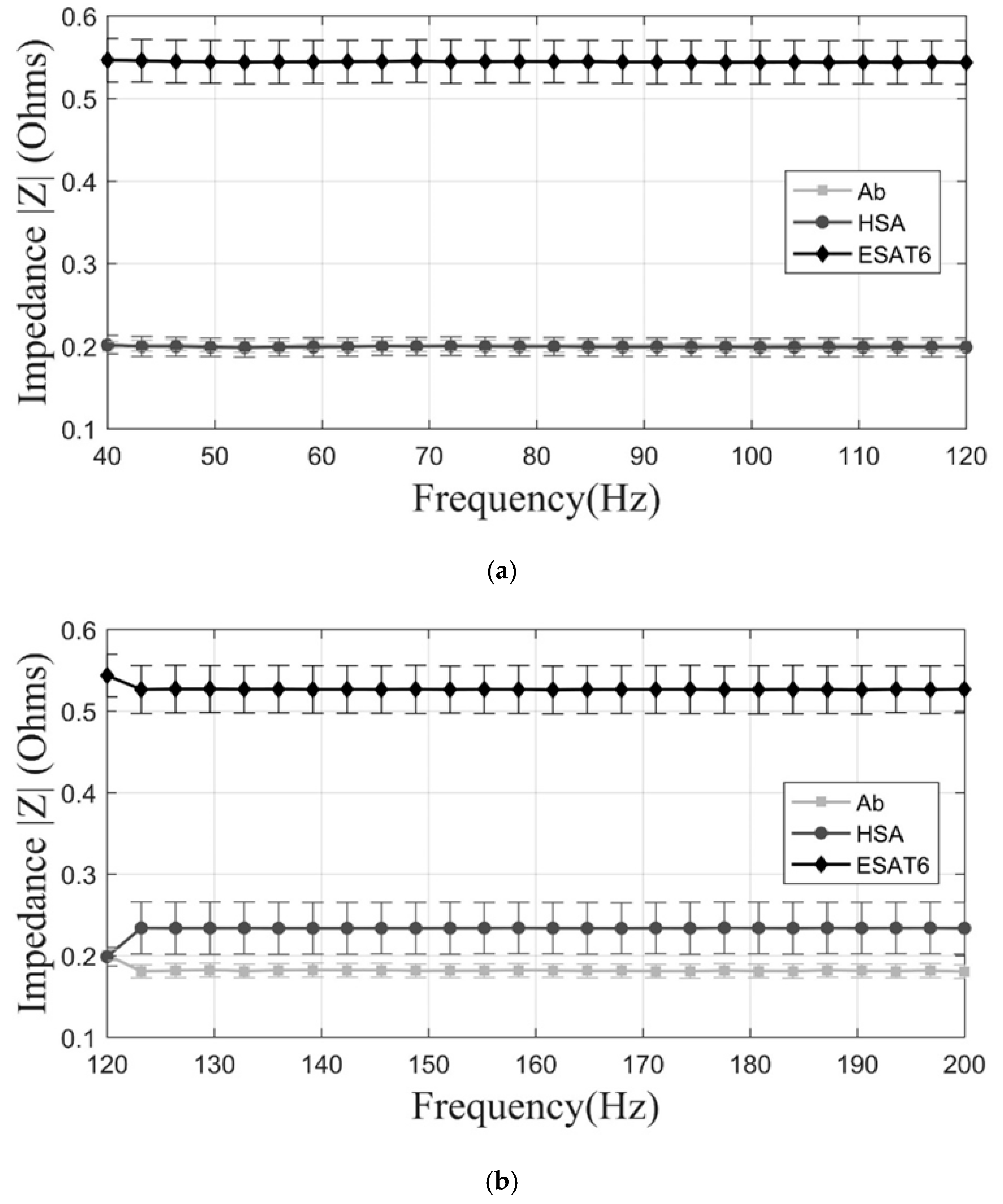
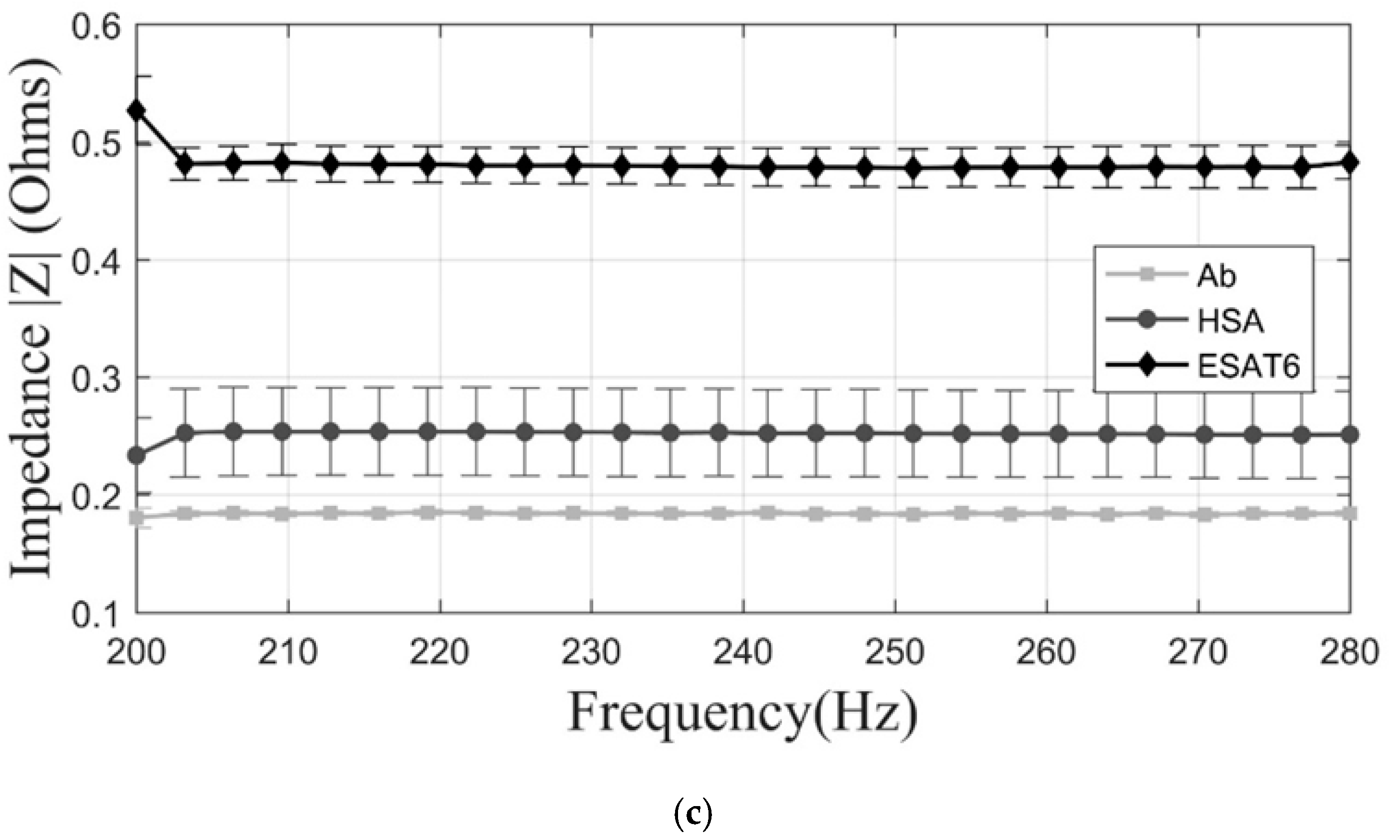
| Test | Cost | Time of Analysis | Probability of Contamination | Difficulty of Analysis for Bleeding Presence | Test Effectiveness |
|---|---|---|---|---|---|
| TBC biosensor | $7 USD (no labor and overhead cost) | 1 h | Low: Although it is a manual process, there are mechanical barriers that avoid reagent filtration between wells | It is based on antigen-antibody binding, so it is not supposed to affect the results | The results confirm that reliable data is obtained with the biosensor |
| Xpert MTB/RIF | $98.10 USD | 2 h | None: Completely automated | With pretreatment the presence of bleeding that can alter the analysis is insignificant | High sensitivity, specificity and reproducibility. Avoid false positive/negative results |
| Culture (MGIT) | $35.56 USD | One month | Medium: Microbial growth can be affected by accompanying microbiota | Bleeding presence does not alter the analysis | Total reliability (70–90%) |
| Smear microscopy test | $4.07 USD | More than one day | None: it is a fast and direct method | With pretreatment the presence of bleeding that can alter the analysis is insignificant | It depends on the sample and the investigator. It has a variable sensibility range 22–80% |
© 2017 by the authors. Licensee MDPI, Basel, Switzerland. This article is an open access article distributed under the terms and conditions of the Creative Commons Attribution (CC BY) license (http://creativecommons.org/licenses/by/4.0/).
Share and Cite
Sepulveda, D.; Aroca, M.A.; Varela, A.; Del Portillo, P.; Osma, J.F. Bioelectrochemical Detection of Mycobacterium tuberculosis ESAT-6 in an Antibody-Based Biomicrosystem. Sensors 2017, 17, 2178. https://doi.org/10.3390/s17102178
Sepulveda D, Aroca MA, Varela A, Del Portillo P, Osma JF. Bioelectrochemical Detection of Mycobacterium tuberculosis ESAT-6 in an Antibody-Based Biomicrosystem. Sensors. 2017; 17(10):2178. https://doi.org/10.3390/s17102178
Chicago/Turabian StyleSepulveda, Danna, Miguel A. Aroca, Andres Varela, Patricia Del Portillo, and Johann F. Osma. 2017. "Bioelectrochemical Detection of Mycobacterium tuberculosis ESAT-6 in an Antibody-Based Biomicrosystem" Sensors 17, no. 10: 2178. https://doi.org/10.3390/s17102178






